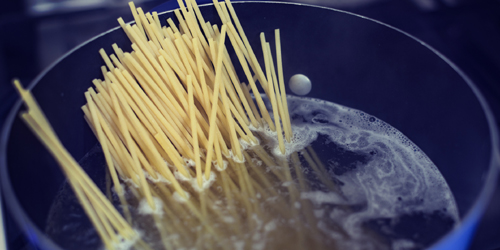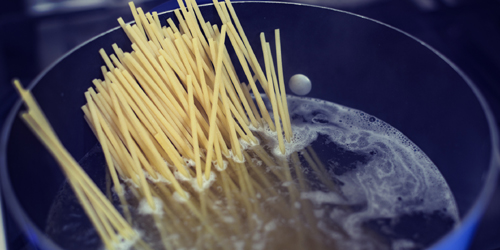Modeling Spaghetti’s Curls
2019 saw physicists tackle a variety of food-and-beverage-related problems, from how to tell apart Scotch and Bourbon via their evaporation patterns (see 24 October 2019 Synopsis) to the optimal way to cook a crêpe (see 11 June 2019 Synopsis). This year is also off to a foody start with a new model from Nathaniel Goldberg and Oliver O’Reilly of the University of California, Berkeley, which predicts how spaghetti strands change shape as they cook.
Submerge a single piece of spaghetti in a saucepan of boiling water and the initially straight strand starts to sag. The spaghetti then slowly sinks to the bottom of the pot, where it settles and curls, doubling back on itself and forming a U shape.
Goldberg and O’Reilly wanted to know what drives the single spaghetti strand to change shape. Gravity certainly plays a role, but that isn’t the whole story. An initially straight elastic rod that is bent by gravity will return to its initial shape when placed on a flat surface, an outcome not seen for spaghetti that has been cooked for even a few tens of seconds. The model they developed accounts for changes in the spaghetti’s length, diameter, density, and elastic modulus as it hydrates during cooking. The resulting framework correctly predicts the deformation of cooking spaghetti, with the duo finding that it’s the change from rigid to viscoelastic behavior—and the strand’s resulting ability to develop curvature and permanently deform without breaking—that drives the shape change.
O’Reilly says that he and Goldberg are excited by the findings, as they show that even seemingly mundane observations are translatable into mathematics. They don’t plan any further spaghetti studies, but they are working on problems related to how rods interact with surfaces, which could apply to spaghetti in a saucepan.
This research is published in Physical Review E.
–Katherine Wright
Katherine Wright is a Senior Editor for Physics.





